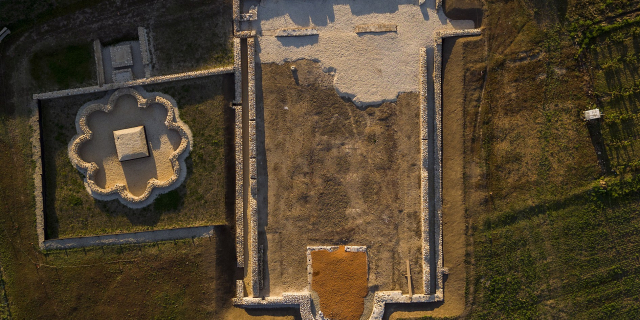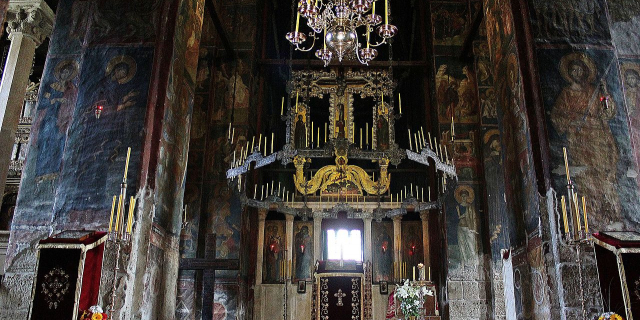National Library of Kosovo
The National Library of Kosovo (Albanian: Biblioteka Kombëtare e Kosovës; Serbian: Народна библиотека Косова, romanized: Narodna biblioteka Kosova) is the highest library institution in Kosovo established by the Assembly and is located in Pristina.
The mission of the library is to collect, preserve, promote and make accessible the documentary and intellectual heritage of Kosovo. It holds exhibitions and holds an archive of national newspapers. The library also provides a number of other services. It is known for its unique history, and the style of the building designed by Yugoslav architect Andrija Mutnjaković, followed by controversies about the outside appearance of it.
The history of libraries in Kosovo dates back to the 14th and 15th centuries.[1] Collections of the Christian and Muslim religious communities are considered as the oldest archives libraries in Kosovo.[2]
Kosovo's institutional library was officially founded in December 1944 in the city of Prizren.
In 1982 the library was moved to the current building which was built in Pristina, the current capital of Kosovo.
Over the years the National Library's name has changed depending on the political position of Kosovo.[3]
Years Name 1944–1952 Regional Library of Autonomous Province of Kosovo 1956–1961 The Library Center of the Autonomous Province of Kosova and Metohija 1961–1970 The National Provincial Library 1970–1990 The National and University Library of Kosovo 1990–1999 The National and University Library of Kosovo and Metohija 1999–2014 The National and University Library of Kosovo 2014- current The National Library of KosovoNote that the former official names of the National Library of Kosovo are originally in Albanian and can be found in the library's journal Bibloletra
1989–1999In 1989, Kosovo's status as an autonomous region of Serbia was revoked, tens of thousands of Kosovo Albanians working in the public sector lost their jobs, and Albanian students were prohibited from taking courses in the Albanian language. For public and private libraries in Kosovo, this was a time when many library collections were burned and destroyed.
The library was subsequently used to house a large number of refugees from Bosnia-Herzegovina and Croatia who had fled their countries due to the Yugoslav Wars. After NATO's occupation of Kosovo in June 1999, it was revealed that the Yugoslav Army had used the library as a command-and-control centre. The materials inside had been stolen, reading room furniture smashed, and the card catalogue had been dumped in the basement. The library workers were kept out for a week while Kosovo Force (KFOR) peacekeeping troops checked the building for any hidden explosives.[4]
According to national and international organizations, about 100,000 Albanian-language books have been sent to the paper mill in Lipjan for pulping. Among those books were collections of national heritage, which explained the nation's origins and history. [5]
ReorganizationAfter the war in Kosovo there was a great will and desire to reconstruct the library buildings and re-establish library services at all levels. This was done with the assistance of a special group of experts from UNESCO, the Council of Europe (CoE) and the International Federation of Library Associations and Institutions (IFLA).[6]
This special group of experts created different training programs like: Legislation and Administration, Mobile Library, Reconstruction, Book and Reading, Information Technology Professional Training and Development, Cultural Heritage, Children and Youth, Open Access Programme, Initiative Support, Twinning.[7] During the years of reorganization the National Library of Kosovo has been aided by many institutions such as the US Embassy, OSCE, Zentralbibliothek Zürich, German Artist Initiatives, Raiffeisen Bank International.[8]































Add new comment